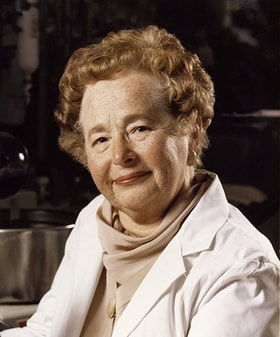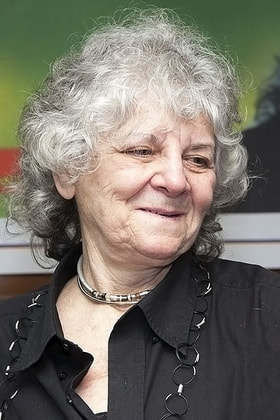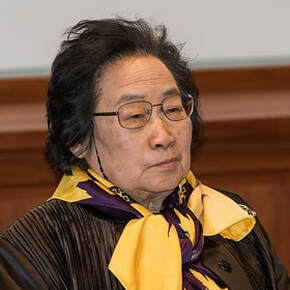|
As modern science took off in the late 19th and early 20th century, women struggled to join the ranks of the scientists. There were social mores against the education of women claiming that doing so would make them “unmarriageable”, as well as notions (some enshrined under the guise of “science”) such as that women were more “unreliable” and “unstable” compared to men because the uterus in women made them more prone to weaknesses and illnesses (the word “hysteria” comes from the Greek word for uterus). Some prominent doctors even argued (I’m not kidding) that higher education placed women at risk because diverting blood from the reproductive organs to the brain could result in nervous collapse, physical breakdown, and infertility! But even when women did get an education and became scientists, they faced many obstacles to the advancement of their careers and experienced difficulties in getting paying jobs as scientists and earning the same as men. Some of these obstacles are still in place nowadays. A combination of the early dearth of women in science coupled with the discrimination they had to endure resulted in women being underrepresented in the accolades to scientific achievement, the most important of which is the Nobel Prize. As of 2019, only 20 Nobel Prizes have been awarded to women in a scientific discipline compared to 596 to men. In this post we will learn about the ladies who attained the highest laurel in science.  Marie Curie Marie Curie Marie Curie was a Polish-French physicist who with her husband Pierre Curie won the Nobel Prize in Physics in 1903, which they shared with Henry Becquerel, for work performed in the emerging field of radiation. The French Academy of Science wanted to nominate only her husband and Becquerel for the prize, but Pierre interceded for her and got the Academy to include Marie’s name in the nomination. Marie Curie also won a second Nobel Prize, this time in chemistry, in 1911 for her work in discovering the new elements Radium and Polonium (her husband had died in an accident in 1906). She is the only woman to have won two Nobel Prizes, and one of the two persons who have earned the prize in separate disciplines.  Irene Joliot-Curie Irene Joliot-Curie Irene Joliot-Curie was a French chemist and physicist and the daughter of Marie and Pierre Curie. She shared the Nobel Prize in Chemistry with her husband Frédéric Joliot-Curie in 1935 for their discovery or artificial radioactivity. Their discovery made possible the synthesis of radioactive elements for specific applications. Yet Irene Joliot-Curie was often discriminated against by people who argued that she was just an assistant to her husband’s work.  Gerty Theresa Cori Gerty Theresa Cori Gerty Theresa Cori was an Austro-Hungarian-American biochemist who with her husband Carl Cori won the Nobel Prize in Physiology or Medicine in 1947, which they shared with Bernardo Houssay, for important work on how the body metabolizes carbohydrates. This work benefited the treatment of diabetes. Gerty Cori became the first woman to win the prize in this discipline, but she encountered discrimination during her life not only for being a woman but also for being Jewish.  Maria Goeppert-Mayer Maria Goeppert-Mayer Maria Goeppert Mayer was a German-American Physicist who won the Nobel Prize in Physics in 1963, which she shared with J. Hans D. Jensen and Eugene Wigner, for the elucidation of the structure of the nuclear shell of the atom. Goeppert Mayer became the first woman not to share a Nobel Prize with her husband (the exception being the second Nobel Prize of Marie Curie), and the second woman to earn a Nobel Prize in Physics. It had been 60 years since Marie Curie had won hers, and it would be 55 years before another woman won this prize again (see later).  Dorothy Crowfoot Hodgkin Dorothy Crowfoot Hodgkin Dorothy Crowfoot Hodgkin was a British chemist who won the Nobel Prize in Chemistry in 1964 for her work in using techniques of X-ray diffraction to determine the structure of many biological molecules, among which were the antibiotic penicillin, vitamin B12, and the hormone insulin, all of which made possible many advances in medicine. Early on in her career at the University of Oxford, she had to struggle with being excluded from male-dominated mainstream scientific activities, and being relegated to work in inferior lab premises with inadequate equipment.  Rosalyn Sussman Yalow Rosalyn Sussman Yalow Rosalyn Sussman Yalow was an American physicist who won the Nobel Prize in Physiology or Medicine in 1977, which she shared with Roger Guillemin and Andrew V. Schally. Her work in the development of the radioimmunoassay to measure very low levels of hormones ushered a revolution in the medical sciences. She suffered both sex and religious discrimination, but she had a remarkably strong character and famously declared "I never thought that there was anything the matter with me. I just feel sorry for the discriminators".  Barbara McClintock Barbara McClintock Barbara McClintock was an American geneticist who was awarded the Nobel Prize in Physiology or Medicine in 1983 for her discovery of transposable elements, which are popularly known as “jumping genes”. This is the only time that a woman has won an unshared prize in this category. She endured decades of discrimination in many forms and her work with transposons was so ahead of her time that it took more than 10 years for her discovery to be accepted by mainstream science.  Rita Levi-Montalcini Rita Levi-Montalcini Rita Levi-Montalcini was an Italian scientist who with Stanley Cohen won the Nobel Prize in Physiology or Medicine in 1986 for their discovery of Nerve Growth Factor (NGF) which promotes the proliferation, growth, and survival of cells. During her life Rita Levi-Montalcini had to deal with discrimination not only for being a woman but also for being a Jew. During the fascist regime of Benito Mussolini, she was laid off from her job at the University in 1938 and had to go into hiding with her family fearing for their lives. But even in these dire conditions she managed to continue her research by setting up a lab in her bedroom!  Gertrude Elion Gertrude Elion Gertrude B. Elion was an American biochemist who with George H. Hitchings won the 1988 Nobel Prize in Physiology or Medicine, which they shared with Sir James Black, for using new methods to design drugs. Unlike earlier methods based on trial and error, the procedures they employed used knowledge of the biochemistry of the diseases they were targeting (rational drug design) and led to the production of numerous pharmaceuticals which are used in areas ranging from cancer and AIDS to organ transplantation. She had trouble starting her career due to both being a woman and the times (the Great Depression). She was turned down by 15 graduate schools to which she applied, and supported herself by working in a number of different jobs while volunteering at labs.  Christiane Nüsslein-Volhard Christiane Nüsslein-Volhard Christiane Nüsslein-Volhard is a German developmental biologist who with Eric F. Wieschaus won the Nobel Prize in Physiology or Medicine in 1995, which they shared with Edward B. Lewis, for their discoveries in the control of embryonic development. These discoveries affected aspects of many disciplines ranging from embryology to evolution. She has remarked that during her career she would often find that many men would have a hard time accepting that a woman could be smarter than them, particularly when she pointed out mistakes that they had made, and this led to many difficulties.  Linda Buck Linda Buck Linda B. Buck is an American biologist who with Richard Axel won the 2004 Nobel Prize in Physiology or Medicine for their work in identifying a family of genes that produce olfactory receptors (the structures in our noses with which we detect smells) and how these receptors are organized to generate the sensation of smell in the brain. She has stated, “As a woman in science, I sincerely hope that my receiving a Nobel Prize will send a message to young women everywhere that the doors are open to them and that they should follow their dreams.”  Françoise Barré-Sinoussi Françoise Barré-Sinoussi Françoise Barré-Sinoussi is a French virologist who with Luc Montagnier won the Nobel Prize in Physiology or Medicine in 2008, which they shared with Harald zur Hausen, for their discovery of the AIDS virus, HIV. This discovery, along with the work of Robert Gallo in the United States, made it possible to eventually produce antivirals and save the lives of millions of people. Barré-Sinoussi tells the story of how, as she was nearing the completion of her doctorate degree at the Pasteur Institute, she sought the advice of one of the senior staff members regarding the possibility that she could remain working at the institute. He replied, “A woman in science, they never do anything. They are only good at caring for the home and babies. Forget this dream.” Millions of AIDS patients are lucky that she decided to pursue the dream!  Carol Greider (Left) and Helen Blackburn (Right) Carol Greider (Left) and Helen Blackburn (Right) Elizabeth Helen Blackburn, an Australian, and Carol W. Greider, an American, are both molecular biologists who won the Nobel Prize in Physiology or Medicine in 2009, which they shared with Jack W. Szostak, for the discovery of telomeres and the enzyme that maintains them (telomerase). Telomeres protect the integrity of chromosomes, and their discovery has had a large impact in many fields ranging from cancer to aging. Early in her career, Greider had to overcome dyslexia and later, as she described it, she had to “face the challenge of being a woman with children in a man’s world”. Blackburn has written often about the right of every woman to choose a career without fear of discrimination for embracing motherhood.  Ada Yonath Ada Yonath Ada E. Yonath is an Israeli crystallographer who won the Nobel Prize in Chemistry in 2009, which she shared with Venkatraman Ramakrishnan and Thomas A. Steitz, for her work in elucidating the structure and modes of action of ribosomes, which are the structures in the cells where proteins are made. Although she has stated that she never felt any gender discrimination throughout her career, she thinks that, “There are fewer women in science because society doesn’t encourage women to become scientists.” Yonath became only the fourth woman to win a Nobel Prize in chemistry, and the first in 45 years since Dorothy Crowfoot Hodgkin won it in 1964.  May-Britt Moser May-Britt Moser May-Britt Moser is a Norwegian neuroscientist who along with her husband Edvard I. Moser won the Nobel Prize in Physiology or Medicine in 2014, which they shared with John O'Keefe, for their discovery of neurons in the brain (grid cells) that are responsible for processing the information about the location of an animal with respect to its environment. She has remarked that getting women into science is important to change the culture, because if men are not accustomed to working with women, they will continue to only support other men.  Tu Youyou Tu Youyou Tu Youyou is a Chinese pharmaceutical chemist who won the Nobel Prize in Physiology or Medicine in 2015, with she shared with William C. Campbell and Satoshi Ōmura, for her role in the discovery of a compound, artemisinin, derived from a traditional Chinese herb (Wormwood). This chemical has been used against malaria saving the lives of millions of people. Since the setting in which Youyou made her discovery was part of a secret military project, her role in the discovery only became known 25 years later when Western scientists from the NIH managed to track her down by reading old government documents. Her contribution had never been recognized in China due to discrimination. Youyou was known as “the professor of the three Nos”: no post-graduate degree, no membership in the Chinese Academy of Sciences, and no research experience outside China.  Donna Theo Strickland Donna Theo Strickland Donna Theo Strickland is a Canadian physicist who with Gérard Mourou won the Nobel Prize in Physics in 2018, which they shared with Arthur Ashkin, for work that allowed the production of very short and intense laser pulses. This development has now been applied in areas such as eye surgery. Strickland is the third woman to receive a Nobel Prize in physics. She has stated that during her career she has always been treated as an equal by the men around her and she has been paid the same as them. This is quite a change from her predecessor Nobel laureate in Physics, Maria Goeppert Mayer, who was not offered a paying job related to her career until after she did her Nobel Prize winning work!  Frances Hamilton Arnold Frances Hamilton Arnold Frances Hamilton Arnold is an American Chemical Engineer who won the Nobel Prize in Chemistry in 2018, which she shared with George P. Smith and Sir Gregory P. Winter, for her use of directed evolution to engineer enzymes with new activities; a process that has found wide applications in industry and science. She has stated that she has experienced stupid sexist remarks and behavior in her career, but that she is gifted with the ability to ignore the people who made them. She considers the fact that she and Donna Strickland both won a Nobel Prize in 2018 may be the beginning of a steady stream of female Nobel Prize winners, and her message for young women is, “Don’t leave this wonderful, fun work just for the men.” Photo of Marie Curie from Tekniska museet’s flickr page (author unknown) is used here under an Attribution 2.0 Generic (CC BY 2.0) license. The photograph of Irene Joliot Curie from the Smithsonian Institution has no known copyright restrictions. The photograph of Gerty Theresa Cori from the National Institutes of Health is in the public domain. Portrait of Maria Goeppert Mayer from the United States Department of Energy is in the public domain. The image of Dorothy Hodgkin from nobelprize.org is used here under the doctrine of Fair Use. The photo of Rosalyn Yalow from the United States Information Agency is in the public domain. The photograph of Barbara McClintock from the Smithsonian Institution has no known copyright restriction. Photo of Rita Levi Montalcini by the Presidenza della Repubblica Italiana is free for use with attribution. Photo of Gertrude Elion from the Welcome Collection is used here under an Attribution 4.0 International (CC BY 4.0) license. Photo of Christiane Nüsslein-Volhard by Rama is used here under an Attribution-ShareAlike 2.0 France (CC BY-SA 2.0 FR) license. The Linda Buck photograph from the Royal Society is used here under an Attribution-Share Alike 3.0 Unported license. Photo of Françoise Barré-Sinoussi by Prolineserver is used here under an Attribution NonCommercial ShareAlike 2.0 license. Photo of Carol Greider and Elizabeth Blackburn by Gerbil is used here under an Attribution-Share Alike 3.0 Unported license. Photo of Ada E. Yonath by Hareesh N. Nampoothiri is used here under an Attribution-Share Alike 3.0 Unported license. Photo of May-Britt Moser by Henrik Fjørtoft/NTNU Komm.avd is used here under an Attribution-Share Alike 2.0 Generic license. Photo of Tu You you by Bengt Nyman is used here under an Attribution-Share Alike 4.0 International license. Photos of Donna Strickland and Frances Arnold by Bengt Nyman are used here under an Attribution 2.0 Generic license.
2 Comments
1/1/2021 12:19:28 am
Professor Prem raj Pushpakaran writes -- 2021 marks the birth centenary year of Rosalyn Yalow, who pioneered radioimmunoassay technique !!!
Reply
Rolando Garcia
1/21/2021 05:38:46 pm
Yes indeed! Thanks for your comment Professor Pushpakaran.
Reply
Your comment will be posted after it is approved.
Leave a Reply. |
Details
Categories
All
Archives
June 2024
|
 RSS Feed
RSS Feed